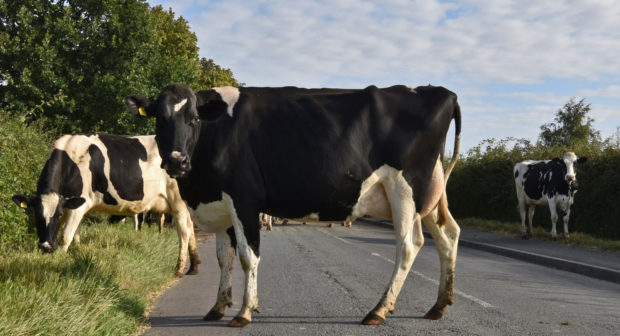You may have read that a farmer whose land borders a stretch of the A9 has been charged with failing to prevent sheep and cattle from wandering on to the highway.
A report has been passed to the procurator fiscal who will decide whether or not to prosecute.
We are all familiar with the occasional sighting on country roads of livestock which have broken out, found an obscure hole in a fence or wandered through an open gateway on to a road, whether simply out of curiosity or in search of that greener grass on the other side.
It happens. So, what is the legal position if animals stray on to the public highway?
The Animals (Scotland) Act 1987 provides that animals straying on to a highway may be detained by the authorities to prevent them causing injury or damage. However, the very fact an animal strays on to a public road is not in itself an offence under that legislation.
What if damage or injury is caused by the straying animal lunching in a householder’s garden, or hitting a vehicle? The Animals Act applies strict liability ie the owner of the animal will be liable even without any deliberate or negligent conduct on the owner’s part.
However, there is a relatively recent court case concerning a vehicle colliding with a black cow in the dark in a dip on a public road where the court held that the owner of the cow was not liable. The cow had escaped through a hole in the fence.
This was a private civil prosecution by an individual against the farmer for damages and the court took account of the common law position when making its determination.
Under common law, an owner is responsible if fault or negligence can be proved.
The judge in this case of the black cow concluded that the occupier of a field adjoining a highway is bound to take reasonable care that his animals do not cause damage. He added that if some unauthorised person leaves a gate open, and the owner of the animal could not reasonably be expected to have known, then that could not be negligence.
This case highlights the importance of being able to demonstrate that reasonable steps – such as regularly checking fencing is stockproof, electric fencing is working etc – have been taken by the owner to prevent an animal straying and causing damage.
There has been a huge spike in the number of incidents of fly-tipping during the lockdown.
It is suggested this is due partly to folk having the time to do clear-outs, and the rubbish then being dumped illegally because recycling centres have been temporarily closed. There have also been far fewer people around these past months to witness this crime being committed.
Statistics find that up to two-thirds of all farmers are affected by fly-tipping. If rubbish is dumped on private land, it is the responsibility of the landowner to then dispose of it legally.
The Environmental Protection Act 1990 prohibits the disposal of waste without the necessary permit and so this may be costly if hazardous materials such as asbestos have been dumped.
The rubbish may be toxic to animals or block field entrances leaving farmers with no option but to get it cleared up.
If there is any evidence of who has committed the act (possibly amongst the rubbish), tempers must be held and the pursuit of the offender left to the relevant authority. If action is successful, costs may be reimbursed. Sadly, the covert nature of fly-tipping lends itself to very few successful prosecutions.
All fly-tipping should be reported either via the relevant local authority or the national website (Dumb Dumpers) – or if witnessed, to the police.
Elizabeth Barr is a consultant with Thorntons Law LLP.










